The terrible scenario above describes an era called “airpocalypse”, where fresh air is no longer available. This new compound word made of ‘air’ and ‘apocalypse’ defines a world with terribly polluted air. According to the Global Burden of Disease Project from WHO, 1.6 million people die due to air pollution in China every year. Let’s find out what fine dust is and why it’s lethal.
Characteristics of Fine Dust
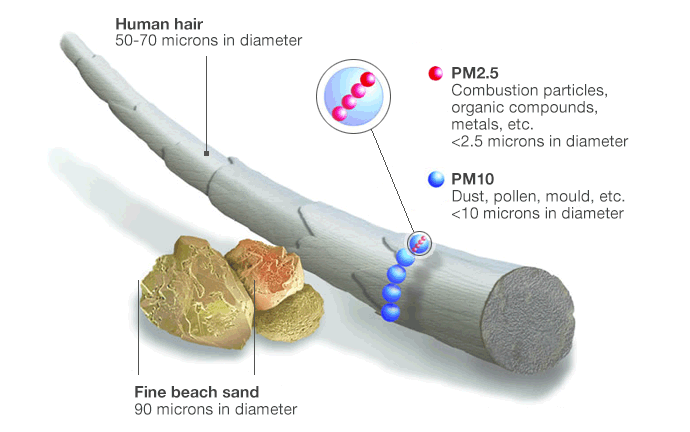
Source: US EPA
Most of the regular dust in the air gets filtered by the hairs in our noses and bronchial tubes, but things are a bit different for fine and ultrafine particles. Fine dust, also known as PM10, can be as small as 1/7th the width of a human hair. Ultrafine particles are even worse, since they’re PM2.5, meaning it’s as tiny as 1/30 of our hair. These extremely small particles are absorbed all the way into our bodies, since our nose, mouth, and bronchial tubes cannot filter them.
Because PM10 and PM2.5 are so tiny, many people think they are made up of a single substance. If you look at them closely however, you’ll be able to see that each particle consists of numerous toxins like heavy metals such as lead, cadmium, and arsenic and hydrocarbon created while burning coal and gas. These dust particles themselves are collections of bad substances.
Impact of Fine Dust on Our Health
The International Agency for Research on Cancer under WHO classified fine dust as a class one carcinogen, considering that fine dust is closely related to lung cancer. According to the study which analyzed the health records of 300,000 people in nine European countries and 2,095 cancer patients, the possibility of lung cancer grows by 18% for every 5㎍/㎥ increase in ultrafine particle concentration.
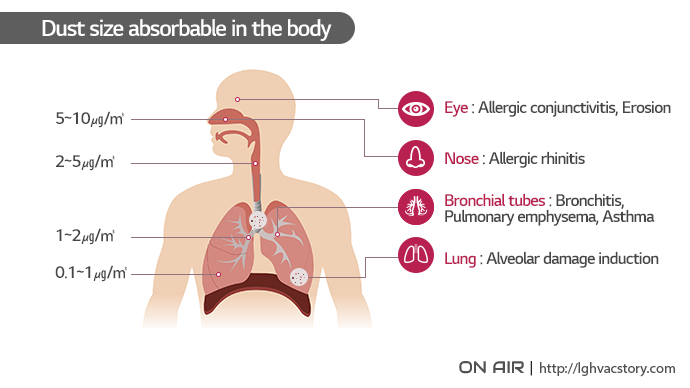
Various diseases caused by fine dust
Fine dust is not just lethal to children and senior citizens, but healthy adults as well. The amount of fine dust inhaled by a healthy adult for an hour in an environment where the level of fine dust concentration is very high (162㎍/㎥) is about 58㎍. This equals inhaling the smoke of a cigarette for 1 hour and 24 minutes in a small room (3.3m²). It also equals inhaling the exhaust coming out of a 2,000cc diesel car in a garage for 3 hours and 40 minutes. They are inhaled fast and can be deadly.
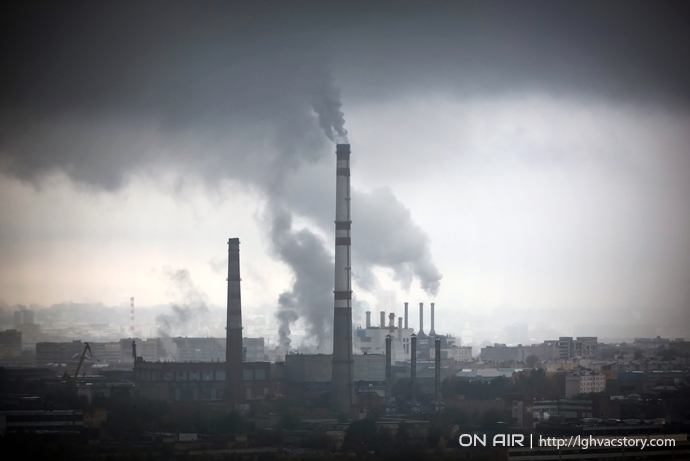
What’s even more surprising is that fine dust can affect not only physical health, but also our mental health. According to a Korean study which analyzed the cases of 4,300 people who committed suicide, the suicide rate increased 9% for every 25% rise in PM10 concentration. The study explained that fine dust affects our central nervous systems, and it leads to inflammation and suppression of hormone secretion in our brains. This process can worsen depression and increase the likelihood of suicide as a result.
The Rising Air Purifier Market – Air Purifier Checklist
Now that more studies are revealing the impact of fine dust on our physical and mental health, the air purifier market is on the rise. The global air-purifier market, with an annual growth rate of 10% in the last three years, is worth 3.5 billion USD. Air purifiers are evolving quickly as well, since they are directly connected to health. If you’re planning to buy one, check the following factors before making a final decision.
✓ Can the filter eliminate ultrafine particles and bacteria?
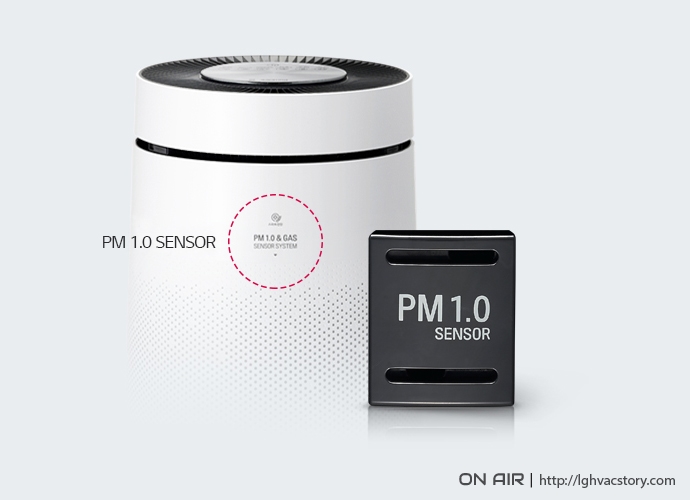
LG PuriCare with a PM 1.0 sensor to filter ultrafine particles smaller than 1.0 ㎛
There are different filter types inside air-purifiers, each with their own functions. Large particles are eliminated through a pre-filter, and household odors and toxic gases are removed through an odor filter. If you’re trying to systematically get rid of PM2.5, however, it’s better to look for a hepa filter. Products that can sense ultrafine particles smaller than 1.0 ㎛ have recently been introduced too, so check what kind of sensor they have as well. Filters that are able to take care of bacteria in the air while eliminating smog-like substances (SO2 and NO2) and chemicals that cause sick house syndrome (toluene and formaldehyde) are even better.
✓ Is the air purifier right for the size of your home?
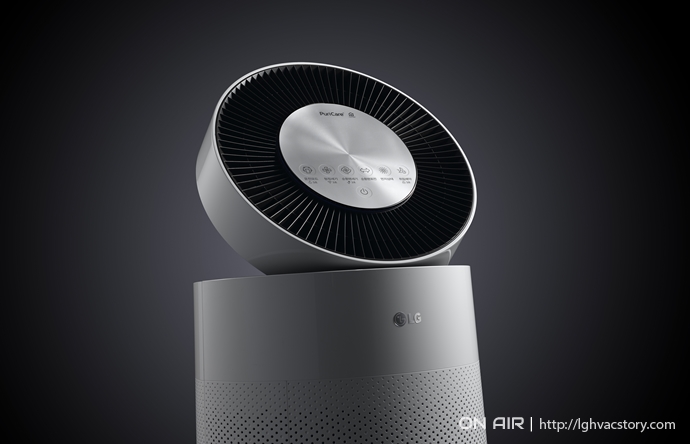
LG PuriCare with 360˚ air intake and outlet to purify air from every part of the room
When looking for an air purifier, consider the size of the space you’ll be using it in and choose one with the right capacity. Products with smaller capacity won’t show the intended air-purifying effect, and the machine itself would have to overwork as well. Check how many square meters the product can cover, and see if the capacity is about 1.5 times larger than the size of the room you want to use it in. See if it has 360˚ intake and outlet, too, to purify the entire room.
✓ Does it have an air-purification display?
It has finally become possible to see how well our electronics work and air purifiers with displays showing pollution levels with numbers and colors are now available. Products with display screens can help you check the condition of the air and respond to it right away.
✓ Is it easy and reasonable to maintain?
The last thing to check is how much effort and expense the purifier requires to maintain, including when to change the filter. If you think you’ll have a hard time keeping track of when exactly to change the filter, then choose a product that lets you know when to do so. It’s also important to make sure parts are easy to clean or replace. Each company/filter has different prices, so it’s better to calculate how much it will cost over time before you buy one.
Today we had a chance to see what airpocalypse would be like and how fine dust affects our health, while taking a peek at the growing air purifier market. Airpocalypse may actually happen if each country doesn’t come up with aggressive measures and strong regulations against fine dust. I really hope the blue sky and fresh air we take for granted don’t become things of the past.


































